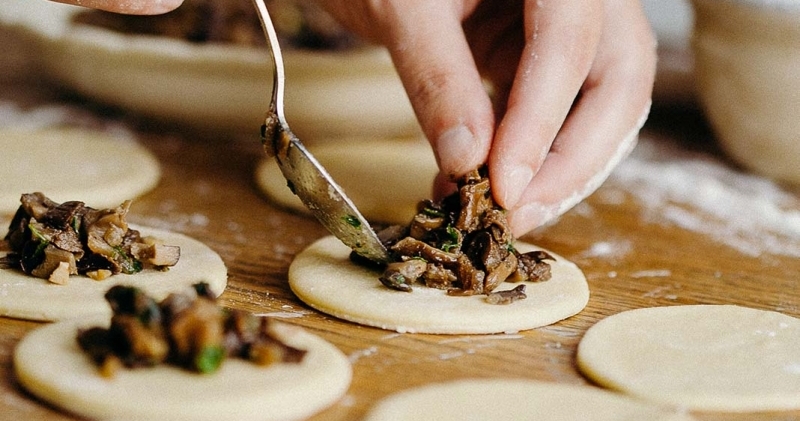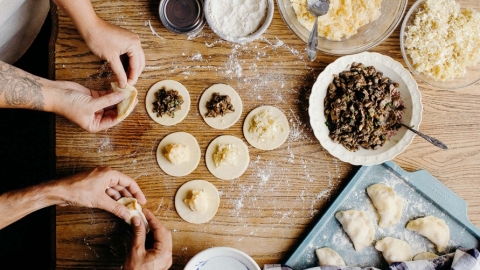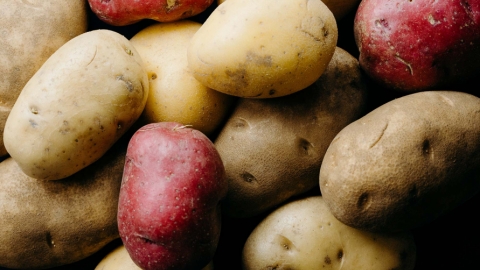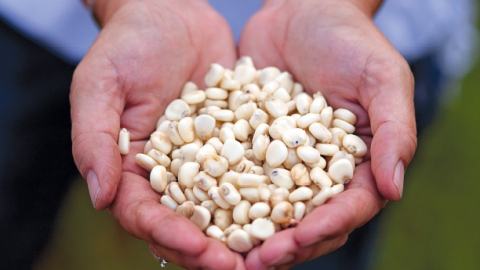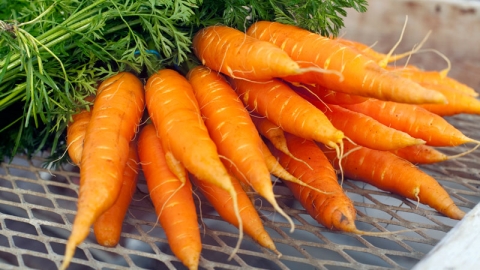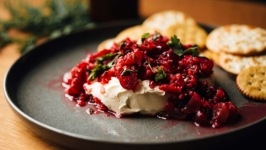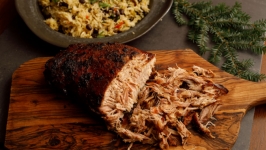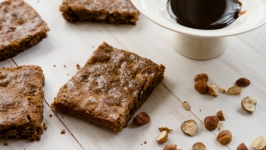Amid a pandemic, a fond memory of in-person pierogi preparation
Two years ago, before we became circumspect about entering each other’s kitchens, my mom cleared her countertops and taught my daughter and me how to make pierogi. It was a day-long affair that included making dough from scratch; preparing four fillings (potato, sauerkraut and cottage cheese, prune, and mushroom); boiling the dumplings; then sealing, labeling and freezing each batch for the Christmas and Easter holidays, when they would be sauteed in olive oil and butter.
It was a heck-ton of work—a multi-step process I had been only vaguely aware of until I participated in person. It was also really fun. I loved reading my grandma’s handwritten instructions to mix the dough by hand until it felt “like velvet” and to cut the dough into circles with an empty, clean tuna can. Spooning teaspoons of filling onto dough circles, then folding them and gently pinching them shut, was relaxing. Eyeing the sheer variety of fillings, anticipating their flavors and textures, was a treat for the senses. We took photos along the way that day, documenting every step of the process, and, thanks to my mom’s efforts, we have a hardbound photo book that includes detailed instructions and some fun snapshots of a special October Saturday. Pierogi preparation wouldn’t have been the same on Zoom, of course, so I’m grateful we seized the opportunity when we did.
I’m not sure exactly how many generations of my family have made pierogi, but my own memories begin with devouring them in my Grandma Rose’s Northwest Indiana kitchen, sitting in chairs upholstered in turquoise vinyl, my short legs dangling in the air. As I grew up, I ate my mom’s pierogi every Easter and Christmas, not willingly tasting the sauerkraut filling until I was an adult. When my husband joined our family, he declared the prune to be his favorite. A couple of years later, my mom added Martha Stewart’s mushroom filling recipe into the mix: a mouthwatering, modern addition and my three kids’ filling of choice.
When my husband and I moved to South Bend, IN, 12 years ago, I started buying mushroom pierogi from the Baker’s Dozen Bake Shop at the South Bend Farmers Market. The dough is thinner than my mom’s but they’re excellent. When my kids were little, I prepared them for lunch nearly every Saturday, smothering them in caramelized onions, sautéed carrot slices, and salt and pepper. I still buy them from Baker’s Dozen frequently. Yes, I could make them from scratch, but pierogi seem to lend themselves to day-long preparation with multiple chefs.
You will always see the word pierogi in its plural form and not in the singular—pieróg—which seems to indicate that these beloved Polish dumplings are meant to be enjoyed and made en masse. Perhaps that’s why, in the United States, so many church groups make them year round as fundraisers.
Of course, very few of us are gathering together in kitchens now. But home-cooked foods like pierogi can still be an enormous comfort. Chef Yotam Ottolenghi recently wrote in the New York Times: “After months of not being able to hug those we love, people are, I think, looking more and more to food to provide the comfort being denied to them in their day-to-day. … Hugs-from-the-kitchen come in many forms.”
Homemade pierogi are my preferred hug-from-the-kitchen, especially during these uncertain times. And thanks to my mom and grandma—pierogi professors extraordinaire—whenever I’m ready, I can gather my own little crew of household chefs and get started. Because of that memorable day in the kitchen when three generations cooked, talked, laughed and photographed dozens of pierogi on flour-covered countertops, I have everything I need—and more.



